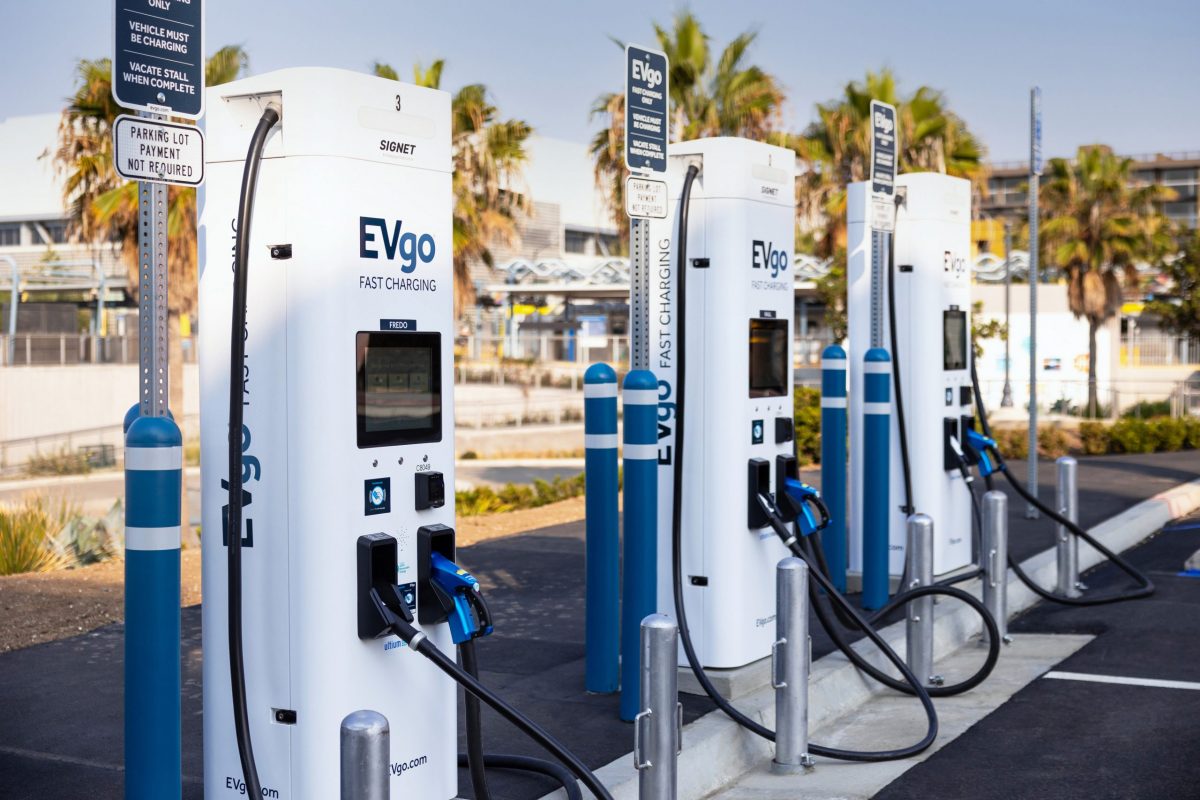Connected technologies are being integrated within new vehicles to improve comfort and safety by communicating with traffic, infrastructure and road signage. Suppliers also see a significant potential for connected technology to enhance the battery range of electric vehicles (EVs) by planning – and adapting – to the most efficient route available at the time.
It has been widely discussed that connected technologies help to address the issue of range anxiety, the term used to describe the fear of running out of battery charge. However, this is an issue that particularly concerns the driver when trying to find a nearby charging station. Connected EVs could potentially make the most of the available battery charge in the first place by planning energy efficient routes and cutting out traffic congestion before the driver gets stuck in energy draining start-stop situations.

Helmut Matschi, Member of the Executive Board and Head of the Interior Division at Continental, recently discussed the rapidly changing societal demands on mobility at the 2015 SAE World Congress in Detroit. Megatrends caught up with Matschi to discuss how connected technology can assist in the development of eMobility.
The connected car needs a connected powertrain
According to Matschi, Continental’s connected eHorizon (pictured) technology – which was recently updated before the 2015 International CES – uses map data “to give vehicle electronics a glimpse into the future.”
 This technology allows the vehicle to adjust to the upcoming route early on and actively reduce consumption, and has led to development of the ‘connected powertrain’. Driver assistance systems (DAS) or actuator behaviour – such as braking and steering – can be prepared for traffic situations before the vehicle sensors detect the situation. Matschi explains: “If the dynamic eHorizon alerts the driver to the tail of a traffic jam after a bend, a vehicle that can ‘see ahead’ could gently reduce its speed, rather than initiating full braking once the sensors have detected the obstacle.”
This technology allows the vehicle to adjust to the upcoming route early on and actively reduce consumption, and has led to development of the ‘connected powertrain’. Driver assistance systems (DAS) or actuator behaviour – such as braking and steering – can be prepared for traffic situations before the vehicle sensors detect the situation. Matschi explains: “If the dynamic eHorizon alerts the driver to the tail of a traffic jam after a bend, a vehicle that can ‘see ahead’ could gently reduce its speed, rather than initiating full braking once the sensors have detected the obstacle.”
Addressing the all-important question of whether there is potential for connected technology to make EVs more efficient, Matschi acknowledges that “range maximisation of electric vehicles is a key benefit”. Highly accurate maps will allow EVs to maximise their range by choosing uncongested routes or where traffic is flowing smoothly to keep acceleration at a stable level. At this point, it is important to note that the same can be said for all vehicles – whether powered by gasoline, diesel or electricity. However, with limited charging stations available, the rewards are potentially greater for EVs.
Think ahead

– Markus Heyn, Bosch
Continental has been working with HERE, a leader in mapping and location services, to develop highly accurate map technology for the eHorizon. These maps incorporate a range of road information, including lane markings and connectivity, speed limit changes and road signs. Using this information, vehicles can react to shifting circumstances, such as variable speed limits, automatically.
Matschi notes that the assistance of HERE’s 3D route profile and information on traffic or weather “may influence the range of EVs.” In addition, “hybrid vehicles can drive even longer without assistance from the internal combustion engine if the vehicle has dynamic traffic information,” he said.
This was a view shared by Bosch’s Markus Heyn, Member of the Board of Management and responsible for Automotive Original Equipment Sales and Marketing, during his presentation at the 2015 Bosch Automotive Press Briefing in Boxberg, Germany.
“These days, it is hard to imagine life without the Internet – and soon that will be true in the car as well…Connectivity is the key to electrified and automated driving,” he mused. Online connectivity means that drivers have access to information about congestion and where to find available parking spaces – and charging points for that matter – all in the name of efficient eMobility.
“On one hand, the detection of road work sites can be communicated to drivers, but it can also be done practically when we have traffic lanes ahead of zones where only EVs may be operated,” said Heyn.

Bosch anticipates that around 15% of all new vehicles will be electrified as early as 2025, and will rely heavily on connected solutions. Rapidly transferred traffic data allows connected vehicles to anticipate what is coming around not only the first bend, but several bends after, as well. When applying this system within an EV, “recuperation and charge levels are optimised,” said Heyn, concluding: “A connected car is always the better car.”
Just part of the puzzle
Epitomising the view of these Tier 1 suppliers, Chairman and Chief Executive of Bosch, Volkmar Denner, recently voiced the opinion that “electric cars are good, but connected electric cars are better.” Improving the driving experience of an EV is only part of a puzzle, where all of the pieces are yet to be made. What is apparent is the need to ensure that EVs can interact with the infrastructure around them and understand traffic conditions to maximise battery life.
Freddie Holmes



